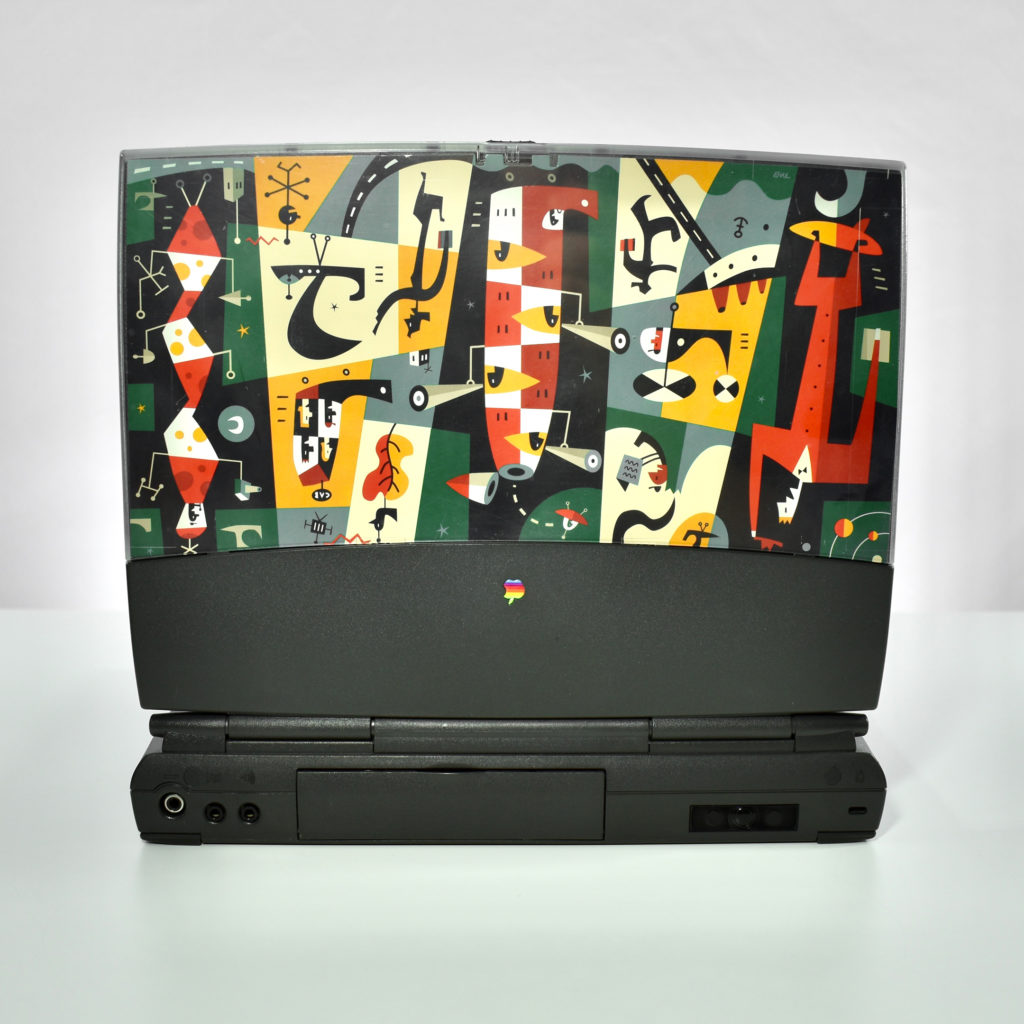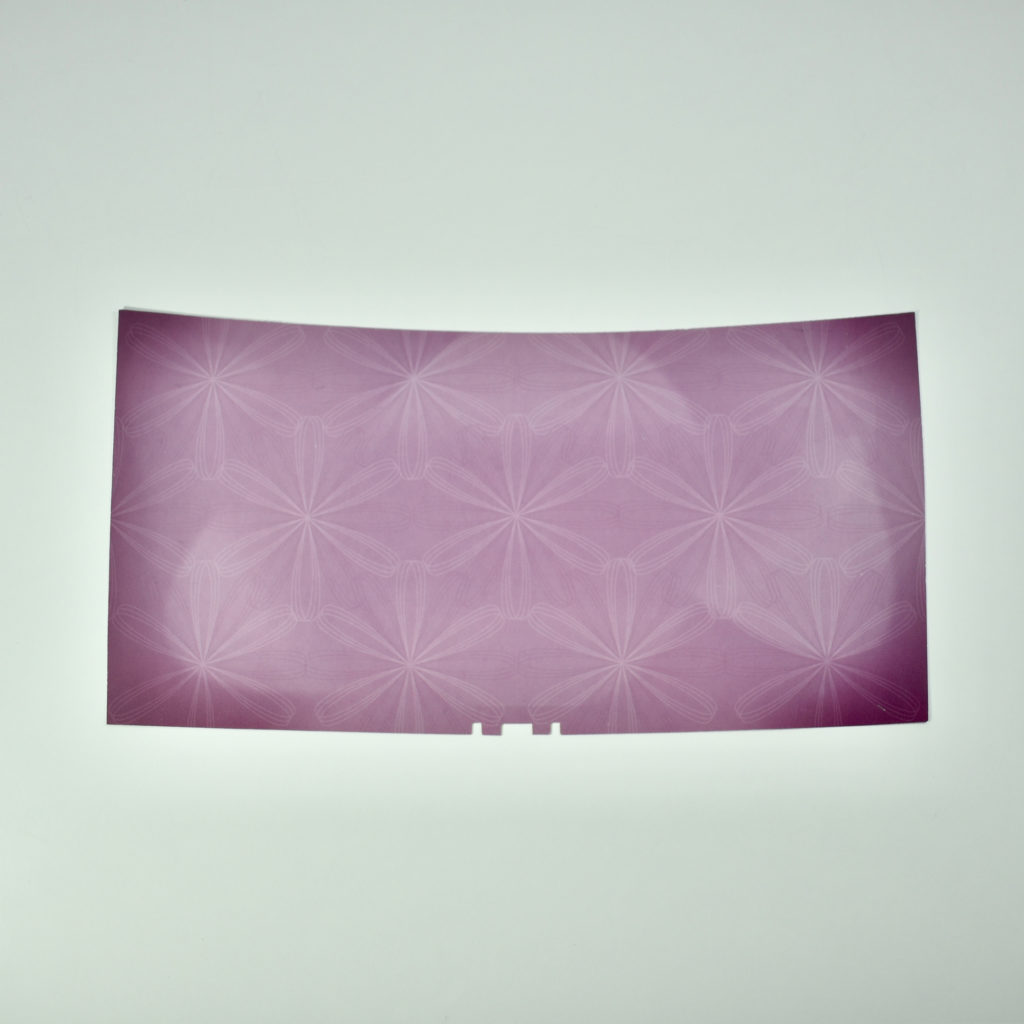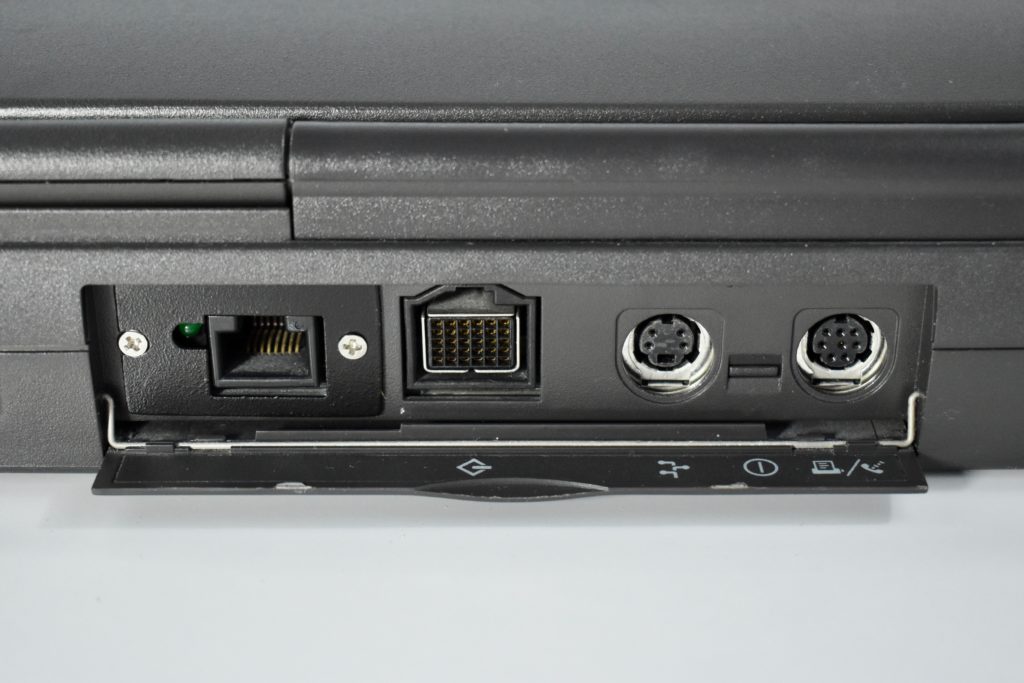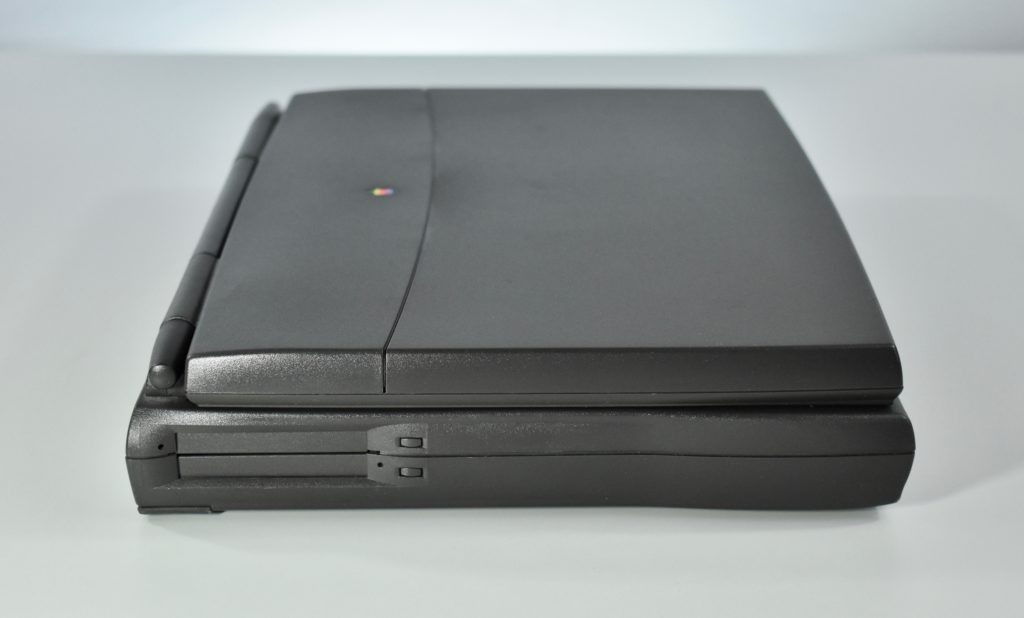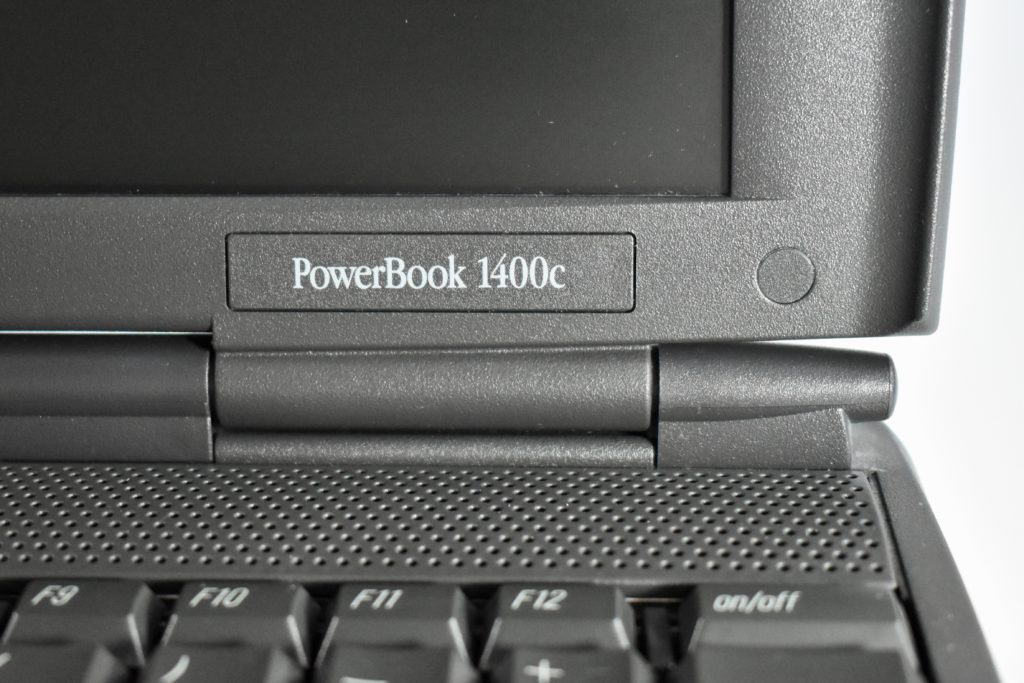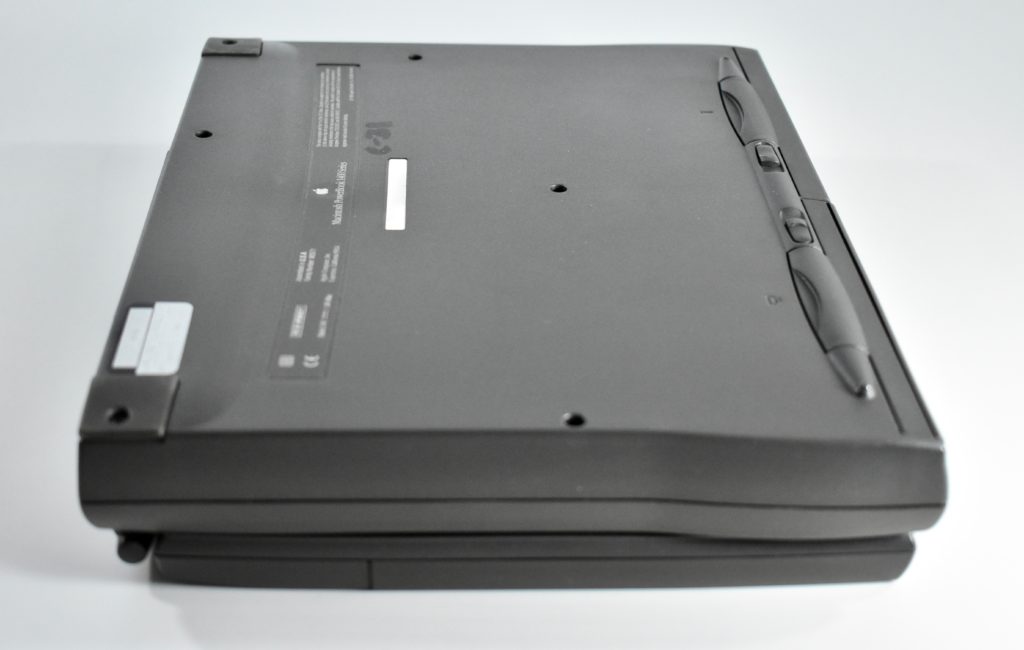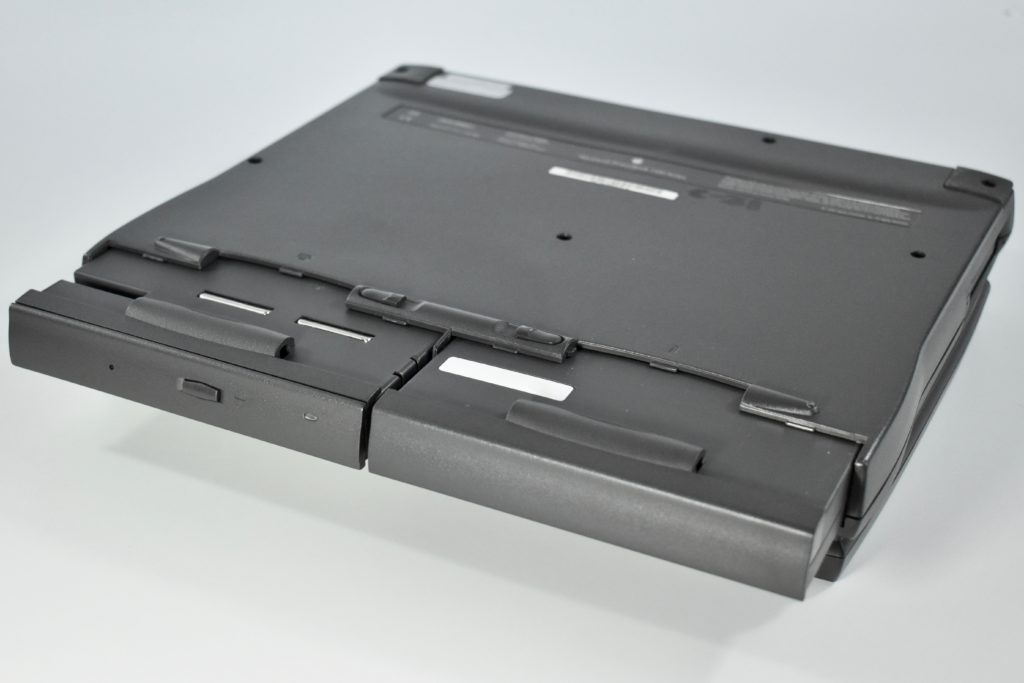The Macintosh PowerBook 1400cs/133 featured a 133 MHz PowerPC 603e processor, 16 MB of RAM, a 1.3 GB hard drive and an 8X CD-ROM drive. The color dual-scan display measured 11.3 inches. The PowerBook 1400cs was similar to the PowerBook 1400c, but the “s” in “cs” indicated a higher quality active-matrix display.
The PowerBook 1400 series was the first PowerBook to use an internal CD-ROM drive and stackable memory modules (allowing more RAM to be installed in the limited space inside a laptop). This PowerBook also included a clear cover on the outer case and shipped with pre-printed “BookCovers” to customize the look of each PowerBook. (A matching dark gray cover was also included for those not wishing to customize.)
Although I have previously included other PowerBook 1400-series laptop examples on my blog, I acquired this model complete with its collection of BookCovers. I wanted to document this laptop along with this interesting design feature not used on an Apple laptop before or since.
PowerBook 1400-series laptops shipped with seven different BookCovers by six different designers. Although each BookCover is two-sided, one side of each BookCover includes a design from a featured designer, and the opposite side uses a pattern in one of seven different colors with a similar, but uncredited, design. The cardboard envelope containing the BookCovers provides a brief bio of each of the designers:
Jim Mitchell, Sydney
Jim Mitchell is a New Zealand artist currently living in Sydney. He is one of the main artists working for Mambo Graphics, Australia’s surf and streetwear company through which his style has become widely recognized. Jim also works for a variety of local and international agencies and magazines, and regularly exhibits his paintings and print work.
Brad Holland, New York
One of the best known and most highly acclaimed figures in American Illustration, Brad has led a very prolific and successful career, receiving more medals from the Society of Illustrators than any other artist in the organization’s history. His work includes covers for The New Yorker, Time, Newsweek and The New York Times Magazine. He continues to work, lecture and exhibit throughout the world.
Carlos Segura, Chicago
Carlos Segura was born in Cuba in 1956 and moved to Florida at the age of 9. He began his career in New Orleans, moving up to Chicago in 1980 where he worked for several advertising agencies before founding his own design company, Segura Inc., in 1991. This was followed in 1994 with the birth of T-26, (a new digital type foundry) helping Carlos to establish himself as a leading force in American graphic design.
Michael Bartalos, San Francisco
Michael Bartalos was born in West Germany in 1959 and is of Hungarian ancestry. Since graduating from the Pratt Institute in 1982, he has worked extensively in the graphic arts in the US and Japan. Recent projects include his children’s book, Shadowville, designs for Swatch watches, and the 32-cent Marathon commemorative stamp for the US Postal Service.
David Karam, San Francisco
David Karam is a partner of Post Tool Design, a design studio he established in 1993 with Gigi Biederman in San Francisco. Post Tool, specializing in print, interaction and multimedia design, quickly built up a client list including Warner Records, Colossal Pictures, Sony Music and Swatch Watch and have been featured in magazines such as Rolling Stone, Communication Arts and ID Magazine.
Keiji Ito, Tokyo
Born in Tokyo in 1958, Keiji Ito is one of Asia’s leading editorial and advertising illustrators, as well as an new and innovative stage and poster designer. His paintings have been exhibited in numerous shows internationally since 1989. He works out of his Tokyo studio, LopLop Design Inc. and is the author and illustrator of three books: Ninifuni, Datecraft 1994 Timescape and Klin Klan.
I remember using my own PowerBook 1400 for a few years while I was teaching and I designed my own custom BookCovers. Unfortunately, I’ve been unable to locate any of my original BookCover designs.
Source: EveryMac


